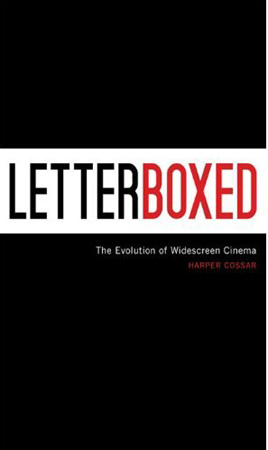Letterboxed: The Evolution of Widescreen Cinema |
Read more at in70mm.com The 70mm Newsletter |
| Written by: The University Press of Kentucky | Date: 15.12.2010 |
 When widescreen technology was introduced to
filmmaking in 1953, it changed the visual framework and aesthetic
qualities of cinema forever. Before widescreen, a director’s vision for
capturing beautiful landscapes or city skylines was limited by what
could be included in the boxy confines of an Academy Ratio film frame.
The introduction and subsequent evolution of widescreen technology has
allowed directors to push the boundaries of filmmaking. Letterboxed: The
Evolution of Widescreen Cinema explores the technological changes of the
widescreen technique and how the format has inspired directors and also
sparked debates among film critics. Examining early filmmakers such as
Buster Keaton and D. W. Griffith and genre pioneers like Nicholas Ray
and Douglas Sirk, Harper Cossar explains how directors use wider aspect
ratios to enhance their creative visions. Letterboxed tracks the history
of stylistic experimentation with the film frame and demonstrates how
the expansion of the screen has uncovered myriad creative possibilities
for directors. When widescreen technology was introduced to
filmmaking in 1953, it changed the visual framework and aesthetic
qualities of cinema forever. Before widescreen, a director’s vision for
capturing beautiful landscapes or city skylines was limited by what
could be included in the boxy confines of an Academy Ratio film frame.
The introduction and subsequent evolution of widescreen technology has
allowed directors to push the boundaries of filmmaking. Letterboxed: The
Evolution of Widescreen Cinema explores the technological changes of the
widescreen technique and how the format has inspired directors and also
sparked debates among film critics. Examining early filmmakers such as
Buster Keaton and D. W. Griffith and genre pioneers like Nicholas Ray
and Douglas Sirk, Harper Cossar explains how directors use wider aspect
ratios to enhance their creative visions. Letterboxed tracks the history
of stylistic experimentation with the film frame and demonstrates how
the expansion of the screen has uncovered myriad creative possibilities
for directors.Harper Cossar, visiting lecturer in communications at Georgia State University, is a contributor to All-Stars and Movie Stars: Sports in Film and History and Convergence Media History as well as the author of many articles in the Journal of Film and Video. He lives in Atlanta, Georgia. “Cossar significantly intervenes in our scholarly understanding of the aesthetics of widescreen cinema by considering them in relation to both auteurism and genre.” —Derek Johnson, assistant professor in the Department of Radio, Television, and Film, University of North Texas |
More in 70mm reading: Internet link: The University Press of Kentucky |
| Go: back - top - back issues - news index Updated 22-01-25 |
